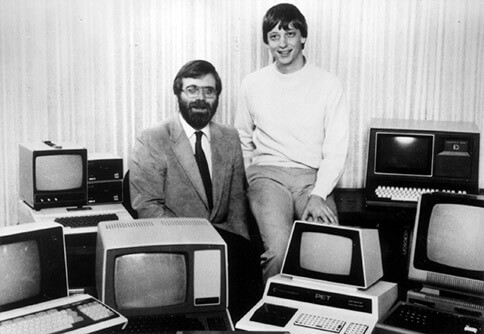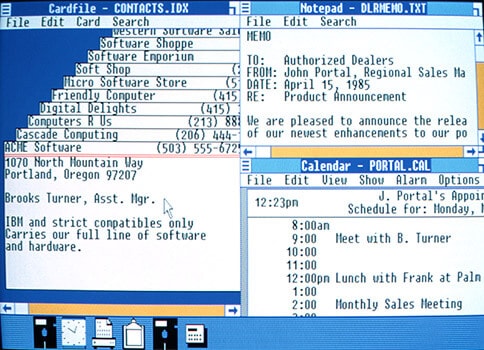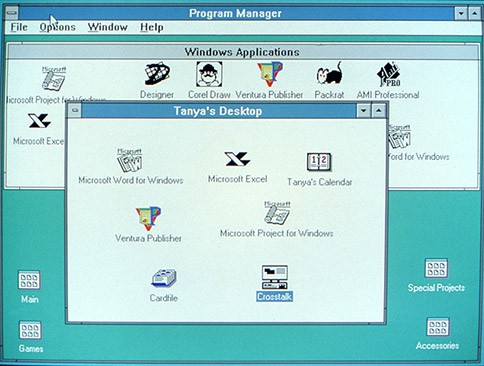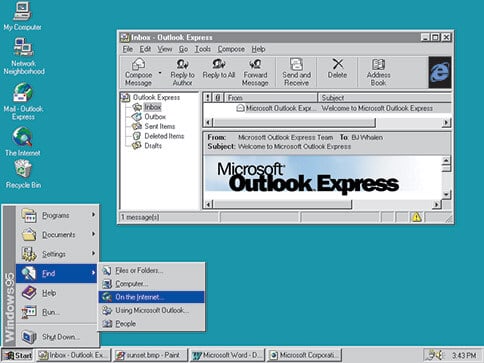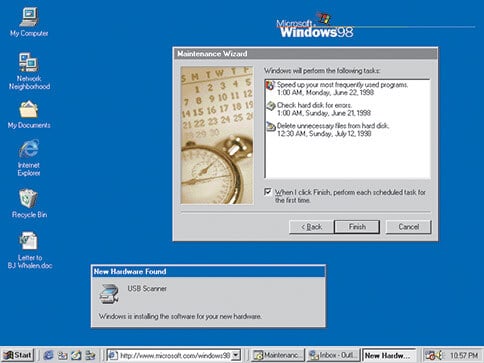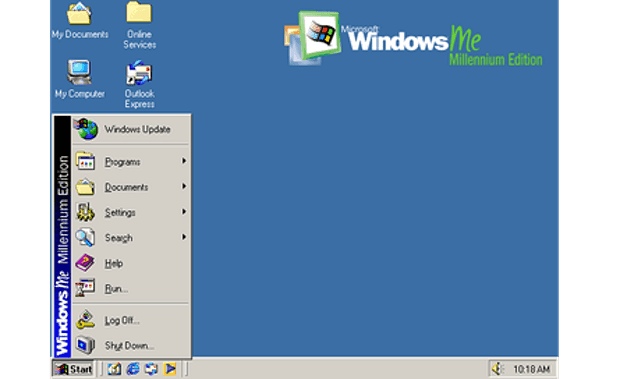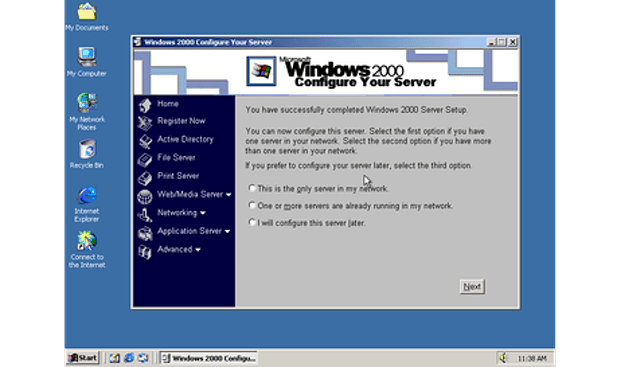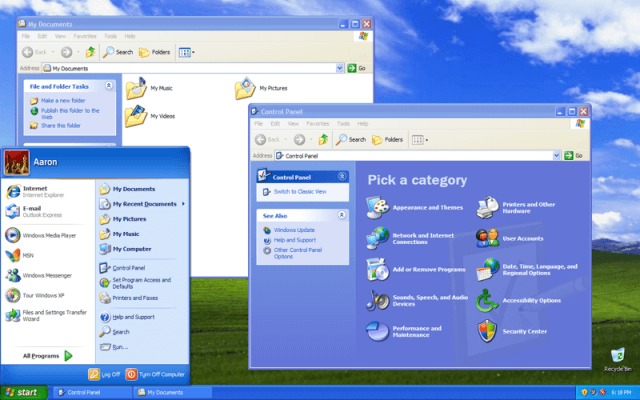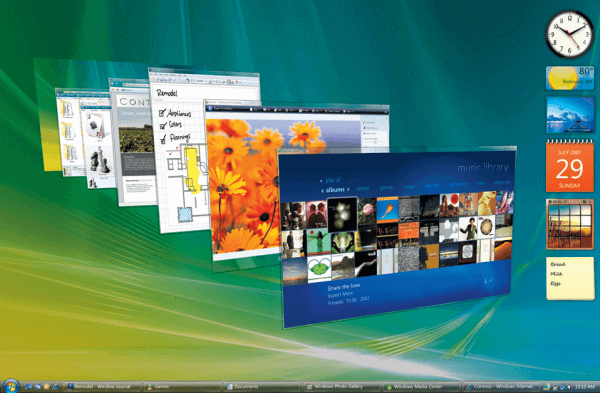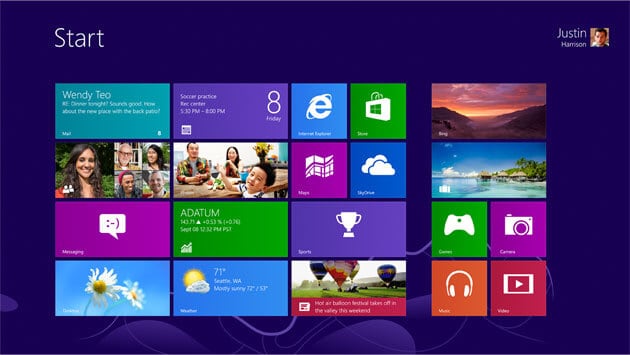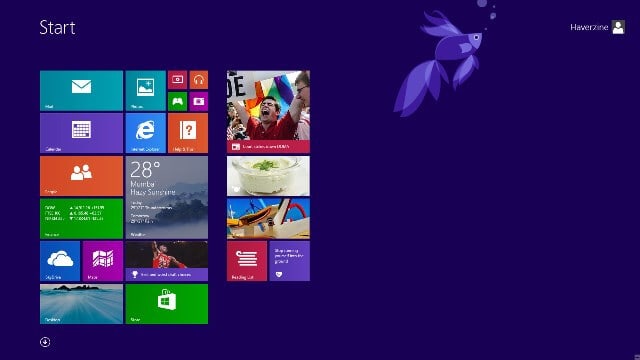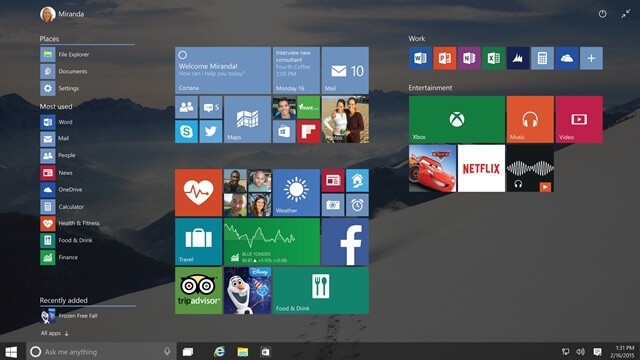The History of Windows Operating Systems
Related Terms
Microsoft Windows is a family of operating systems. We look at the history of Microsoft’s Windows operating systems (Windows OS) from 1985 to present day.
The Windows operating system (Windows OS) for desktop PCs are more formally called Microsoft Windows and is actually a family of operating systems for personal computers. Windows dominates the personal computer world, running, by some estimates, more than 90 percent of all personal computers – the remainder running Linux and Mac operating systems.
Windows provides a graphical user interface (GUI), virtual memory management, multitasking, and support for many peripheral devices. In addition to Windows operating systems for personal computers, Microsoft also offers operating systems for servers and mobile devices.
The following image indicates the total market share of all desktop operating systems (November, 2017).
Windows OS Quick Links
Microsoft Windows Operating Systems for PCs
The following details the history of MS-DOS and Windows operating systems designed for personal computers (PCs).
MS-DOS — Microsoft Disk Operating System (1981)
Originally developed by Microsoft for IBM, MS-DOS was the standard operating system for IBM-compatible personal computers. The initial versions of DOS were very simple and resembled another operating system called CP/M. Subsequent versions have become increasingly sophisticated as they incorporated features of minicomputer operating systems.
Windows 1.0 – 2.0 (1985-1992)
Introduced in 1985, Microsoft Windows 1.0 was named due to the computing boxes, or «windows» that represented a fundamental aspect of the operating system. Instead of typing MS-DOS commands, windows 1.0 allowed users to point and click to access the windows.
In 1987 Microsoft released Windows 2.0, which was designed for the designed for the Intel 286 processor. This version added desktop icons, keyboard shortcuts and improved graphics support.
Windows 3.0 – 3.1 (1990–1994)
Windows 3.0 was released in May, 1900 offering better icons, performance and advanced graphics with 16 colors designed for Intel 386 processors. This version is the first release that provides the standard «look and feel» of Microsoft Windows for many years to come. Windows 3.0 included Program Manager, File Manager and Print Manager and games (Hearts, Minesweeper and Solitaire). Microsoft released Windows 3.1 in 1992.
Windows 95 (August 1995)
Windows 95 was released in 1995 and was a major upgrade to the Windows operating system. This OS was a significant advancement over its precursor, Windows 3.1. In addition to sporting a new user interface, Windows 95 also includes a number of important internal improvements. Perhaps most important, it supports 32-bit applications, which means that applications written specifically for this operating system should run much faster.
Although Windows 95 can run older Windows and DOS applications, it has essentially removed DOS as the underlying platform. This has meant removal of many of the old DOS limitations, such as 640K of main memory and 8-character filenames. Other important features in this operating system are the ability to automatically detect and configure installed hardware (plug and play).
Windows 98 (June 1998)
Windows 98 offers support for a number of new technologies, including FAT32, AGP, MMX, USB, DVD, and ACPI. Its most visible feature, though, is the Active Desktop, which integrates the Web browser (Internet Explorer) with the operating system. From the user’s point of view, there is no difference between accessing a document residing locally on the user’s hard disk or on a Web server halfway around the world.
Windows ME — Millennium Edition (September 2000)
The Windows Millennium Edition, called «Windows Me» was an update to the Windows 98 core and included some features of the Windows 2000 operating system. This version also removed the «boot in DOS» option.
Windows NT 31. — 4.0 (1993-1996)
A version of the Windows operating system. Windows NT (New Technology) is a 32-bit operating system that supports preemptive multitasking. There are actually two versions of Windows NT: Windows NT Server, designed to act as a server in networks, and Windows NT Workstation for stand-alone or client workstations.
Windows 2000 (February 2000)
Often abbreviated as «W2K,» Windows 2000 is an operating system for business desktop and laptop systems to run software applications, connect to Internet and intranet sites, and access files, printers, and network resources. Microsoft released four versions of Windows 2000: Professional (for business desktop and laptop systems), Server (both a Web server and an office server), Advanced Server (for line-of-business applications) and Datacenter Server (for high-traffic computer networks).
Windows XP (October 2001)
Windows XP was released in 2001. Along with a redesigned look and feel to the user interface, the new operating system is built on the Windows 2000 kernel, giving the user a more stable and reliable environment than previous versions of Windows. Windows XP comes in two versions, Home and Professional. Microsoft focused on mobility for both editions, including plug and play features for connecting to wireless networks. The operating system also utilizes the 802.11x wireless security standard. Windows XP is one of Microsoft’s best-selling products.
Windows Vista (November 2006)
Windows Vista offered an advancement in reliability, security, ease of deployment, performance and manageability over Windows XP. New in this version was capabilities to detect hardware problems before they occur, security features to protect against the latest generation of threats, faster start-up time and low power consumption of the new sleep state. In many cases, Windows Vista is noticeably more responsive than Windows XP on identical hardware. Windows Vista simplifies and centralizes desktop configuration management, reducing the cost of keeping systems updated.
Windows 7 (October, 2009)
Windows 7 was released by Microsoft on October 22, 2009 as the latest in the 25-year-old line of Windows operating systems and as the successor to Windows Vista (which itself had followed Windows XP). Windows 7 was released in conjunction with Windows Server 2008 R2, Windows 7’s server counterpart. Enhancements and new features in Windows 7 include multi-touch support, Internet Explorer 8, improved performance and start-up time, Aero Snap, Aero Shake, support for virtual hard disks, a new and improved Windows Media Center, and improved security.
Windows 8
Windows 8 was released on August. 1, 2012 and is a completely redesigned operating system that’s been developed from the ground up with touchscreen use in mind as well as near-instant-on capabilities that enable a Windows 8 PC to load and start up in a matter of seconds rather than in minutes.
Windows 8 will replace the more traditional Microsoft Windows OS look and feel with a new «Metro» design system interface that first debuted in the Windows Phone 7 mobile operating system. The Metro user interface primarily consists of a «Start screen» made up of «Live Tiles,» which are links to applications and features that are dynamic and update in real time. Windows 8 supports both x86 PCs and ARM processors.
Windows 10
Windows 10 is Microsoft’s Windows successor to Windows 8. Windows 10 debuted on July 29, 2015, following a «technical preview» beta release of the new operating system that arrived in Fall 2014 and a «consumer preview» beta in early 2015. Microsoft claims Windows 10 features fast start up and resume, built-in security and the return of the Start Menu in an expanded form. This version of Windows will also feature Microsoft Edge, Microsoft’s new browser. Any qualified device (such as tablets, PCs, smartphones and Xbox consoles) can upgrade to Windows 10, including those with pirated copies of Windows.
Windows 11
As of Sept. 2020, Microsoft had no plans for Windows 11 and planned to continue to update and support Windows 10 (see Microsoft’s Windows lifecycle fact sheet).
Microsoft Operating Systems for Servers and Mobile Devices
Aside from operating systems designed for use on personal computers (PCs) and laptops, Microsoft has also developed operating systems for services, handheld devices, and mobile phones.
Windows Server (March 2003)
Windows Server is a series of Microsoft server operating systems. Windows servers are more powerful versions of their desktop operating system counterparts and are designed to more efficiently handle corporate networking, Internet/intranet hosting, databases, enterprise-scale messaging and similar functions. The Windows Server name made its debut with the release of Windows Server 2003 and continues with the current release, Windows Server 2008 R2, which shares its codebase with Windows 7. Windows Server 2008 R2 debuted in October 2009.
Windows Home Server (January 2007)
Announced in January 2007, Windows Home Server (WHS) is a «consumer server» designed to use with multiple computers connected in the home. Home Server allows you to share files such as digital photos and media files, and also allows you to automatically backup your home networked computers. Through Windows Media Connect, Windows Home Server lets you share any media located on your WHS with compatible devices.
Windows CE (November 2006)
A version of the Windows operating system designed for small devices such as personal digital assistants (PDAs) (or Handheld PCs in the Microsoft vernacular). The Windows CE graphical user interface (GUI) is very similar to Windows 95 so devices running Windows CE should be easy to operate for anyone familiar with Windows 95.
Windows Mobile (April 2000)
A mobile operating system for smartphones and mobile devices from Microsoft based on the Windows CE kernel and designed to look and operate similar to desktop versions of Microsoft Windows. Windows Mobile has largely been supplanted by Windows Phone 7, although Microsoft did release, in 2011, Windows Embedded Handheld 6.5, a mobile OS compatible with Windows Mobile 6.5 that’s designed for enterprise mobile and handheld computing devices.
Windows Phone (November 2010)
A mobile operating system for smartphones and mobile devices that serves as the successor to Microsoft’s initial mobile OS platform system, Windows Mobile. Unlike Windows Mobile, Windows Phone 7 (also referred to as WinPhone7) is targeted more to the consumer market than the enterprise market, and it replaces the more traditional Microsoft Windows OS look and feel with a new «Metro» design system user interface.
Windows Phone 7 features a multi-tab Internet Explorer Mobile Web browser that uses a rendering engine based on Internet Explorer 9 as well Microsoft Office Mobile, a version of Microsoft Office that’s tailored for mobile devices. Its successors include Windows Phone 8 and Windows 10 Mobile.
Webopedia’s Top 5
Study Guides
This article was last updated on August 02, 2018
The Evolution of Microsoft Windows Operating System
Published on August 19, 2015 By Amit Kumar
We all know that Microsoft Windows Operating System is the most popular and most used operating systems in Desktop and laptop computers. But, do you know about the evolution and history of Windows?
The Microsoft Windows is just like “one man army” in the field of operating systems because the company is efficiently providing Windows operating system services from past 30 years and people are happy with it. Even after independently ruling the operating system industry from years, the Microsoft Windows is still the most powerful and beneficial OS provider.
In this high technology era, the expectations of people have extremely grown up and they are ready to grab all the advanced services quickly. But Microsoft Windows Operating System is still the king of the game. For the example, you can see the Microsoft’s newly released Windows operating system “Windows 10“.
Windows 10 is the most advanced, full with features, fast and attractive operating system of Windows. If you are using Windows operating system from years, but still not familiar with the History of Microsoft windows operating system then you must take advantage from the below-mentioned glimpse of Microsoft Windows Operating System history.
Related tips you might like »»
The History of Microsoft Windows Operating System
Most of us know very well about the founder of Windows operating system and the most popular Windows operating system by Microsoft. But very few of us know – What was Microsoft’s first operating system? And, In Microsoft windows how many types of operating systems are there?
In this Microsoft Windows guide, I am going to explain about the evolution of Microsoft Windows Operating System over 30 years. So, let’s have a look at the glimpse of Microsoft Windows Operating System history:
In 1983, Microsoft announced the development of Windows operating system, a graphical user interface (GUI) for its own operating system (MS-DOS). Over 30 years later a lot of things has changed, let’s start observing the things:
Windows 1.0
The first version of Microsoft Windows (Windows 1.0) was released on November 20, 1985. It was one of the most surprising moments for all computer users because now they were able to move a mouse to point and click their way through the screen in the place of typing MS‑DOS commands.
Windows 1.0 was introduced with several basic programs like MS‑DOS file management, Paint, Windows Writer, Notepad, Calculator, and a calendar, card file, and clock etc. Even a game called “Reversi” was also included with the Microsoft’s first Windows operating system.
Windows 2.0
Just after the two years, Microsoft released Windows 2.0 on December 9, 1987. The second version of Windows was introduced with desktop icons and expanded memory. Along with the Windows 2’s improved graphics support, now users were able to overlap windows, manage the screen layout, and use keyboard shortcuts etc to speed up their work.
The most interesting thing, Control Panel made its first appearance in Windows 2.0 operating system.
Windows 3.0
After launching two successful versions of Windows, Microsoft made an announcement about its third operating system (Windows 3.0) on May 22, 1990. This new Windows operating system was quite popular because of its good performance, advanced graphics with 16 colors, and improved icons.
Windows 3.0 was released with full support for the Intel 386 processor, Program Manager, File Manager, and Print Manager etc. With this OS, all the programs were running noticeably faster in comparison to other older versions of Windows.
Windows 3.1
Windows 3.1 was released in 1992. Basically, Windows 3.1 was the updated version of Windows 3.0. People felt attracted towards it because Windows 3.1 required only 1MB of RAM to run and allowed all supported MS-DOS programs to be controlled with a mouse.
Addition to all these things, Windows 3.1 operating system was also the first Windows version to be distributed on a CD-ROM. Microsoft Minesweeper’s appearance was another interesting thing.
Windows 95
After the three years of accurate observations of users activities, Microsoft released the new version of Windows called “Windows 95” on August 24, 1995. Windows 95 was the first Windows operating system that came with a Start button and Start menu.
The most exciting thing, Windows 95 was built with Internet support, dial-up networking, and new Plug and Play capacities that allow installing hardware and software easily.
Windows 98
Windows 98 was the last version of Windows based on MS‑DOS which was released on June 25, 1998. It was designed specifically for consumers. Windows 98 was the first version of Windows that introduced back and forward navigation buttons and the address bar in Windows Explorer, among all other things.
Along with the support for reading DVD discs and universal serial bus (USB) devices, it came with many other improved features that help users to open and close programs more quickly.
Windows Me
Technically, Windows Me (released on September 2000) was specially designed for home computer use. It provides countless music, video, and home networking enhancements and reliability improvements compared to all previous versions of Windows. Also, the Windows Me Edition was the last Windows operating system to be based on Windows 95 code-base.
Windows Me landed with many helpful features like System Restore, Movie Maker, Microsoft Windows Media Player 7 technologies etc.
Windows 2000 Professional
Windows 2000 Professional is the enterprise twin of Windows Me which was released on February 2000. It was based on Microsoft’s business-oriented system Windows NT Workstation 4.0 and later it became the basis for Windows XP.
Actually, Windows 2000 Professional is specially designed to replace all other old versions of Windows including Windows 95, Windows 98, and Windows NT Workstation 4.0 on all business computer desktops and laptops.
Windows XP
Concretely one of the best Microsoft’s Windows versions, Windows XP was released on October 2001. The redesigned look and feel with great accessibility and a unified Help and Support services center made this operating system more awesome. Windows XP was also the longest running Microsoft’s Windows operating system.
Windows XP was really quite stable, usable, and fast in all ways. It was available in 25 different languages. Navigation simplicity of the Start menu, taskbar, and Control Panel are more intuitive. Windows XP operating system has several editions like Windows XP 64-bit Edition (2001)| Windows XP Media Center Edition (2002) | Windows XP Tablet PC Edition (2002).
Windows Vista
After the 6 years long journey of Windows XP, Windows Vista was released in 2006. Windows Vista was specially security focused operating system which was available in 35 different languages. System design plays a big role in Windows Vista, many features like the taskbar, Start button, Search menu received a brand new look with this operating system.
Windows Vista was introduced with the new features like speech recognition, Windows DVD Maker and Photo Galler etc. Addition to these things, it was also the first Windows version to be distributed on DVD.
Windows 7
Windows 7 was first released in October 2009 along with some very interesting features such as faster booting, Device Stage, Windows PowerShell, less obtrusive User Account Control, multi-touch, and improved window management etc. Windows 7 operating system is available in six different editions:
- Windows 7 Starter (available worldwide)
- Windows 7 Home Basic
- Windows 7 Home Premium
- Windows 7 Professional
- Windows 7 Enterprise (available to volume-license business customers only)
- Windows 7 Ultimate (available to retail market with limited availability to OEMs)
Undoubtedly, Windows 7 is faster, more stable and easier to use. According to the Wikipedia’s usage share of operating systems list, Windows 7 is the most used Windows operating system on Desktop and laptop computers. In order to get more interesting guide related to Windows 7 operating system, check out our Windows 7 Tutorials section.
Windows 8
Windows 8 was Microsoft’s most good looking and colorful operating system released on October 2012. Windows 8 was the first version of Windows that come up with a totally new interface that works quite smoothly for both touch and mouse and keyboard. It features a Start screen (updated Start menu) with apps and tiles that connect to people, files, apps, and websites etc.
Basically, Windows 8 operating system is focused more on the touch screen than a keyboard and mouse. Windows 8 operating system is available in the following editions:
- Windows 8
- Windows 8 Pro
- Windows 8 Enterprise
- Windows RT
Windows 8.1
Windows 8.1 is the advanced version of Windows 8 operating system introduced in October 2013. It offers a powerful collection of Windows apps and cloud connectivity on most of the compatible devices. It comes up with some interesting improvements and new features like changes in user interface and desktop, apps, online services and functionality, security and hardware compatibility, hardware functionality etc.
Addition to all these changes, Windows 8.1 is also full with various new built-in apps such as Bing Food & Drink, Bing Health & Fitness, and some great utility apps like Reading List, Calculator, and Alarms etc. Windows 8.1 operating system is available in the following editions:
- Windows RT 8.1
- Windows 8.1 Edition
- Windows 8.1 Pro Edition
- Windows 8.1 Enterprise Edition
Windows 10
Windows 10 is the newly released (July 29, 2015) Windows operating system of the Microsoft. Windows 10 operating system is the most advanced version of Microsoft Windows which is introduced with a number of new features like Cortana, the Microsoft Edge, The Start menu, Windowed Windows Store apps, Virtual desktops/Task View, Action Center, Revamped core apps, The Xbox app, Continuum, Unified settings, and much more.
Actually, Windows 10 combines the strengths of Windows 8 with Windows 7 operating system. Microsoft Edge is the new Web browser of Windows 10 which is specially designed to be a lightweight web browser. Windows 10 operating system is available in the following editions:
- Windows 10 Home
- Windows 10 Pro
- Windows 10 Enterprise
- Windows 10 Enterprise 2015 LTSB
- Windows 10 Education
- Windows 10 Mobile
- Windows 10 Mobile Enterprise
- Windows 10 IoT Core
Windows 10 offering free upgrade to Windows 7 and Windows 8.1 users for the first year. So, if you are using a genuine version of Windows then you can easily upgrade to Windows 10 for free from Windows 7 or Windows 8.1 operating system. If you want perform a clean Windows 10 installation, you can do it by creating Windows 10 bootable USB flash drive.
Thus, you can see how amazingly Microsoft Windows operating system received the exclusive designs, features, new services, and well optimized structures. I am quite sure, you found the above mentioned glimpse of Microsoft Windows Operating System history useful for you.







